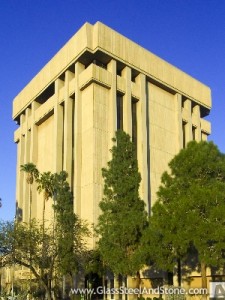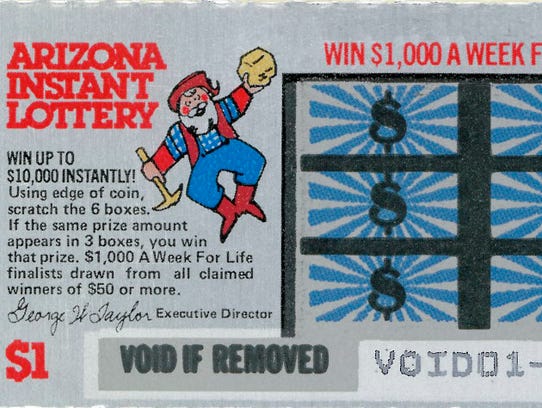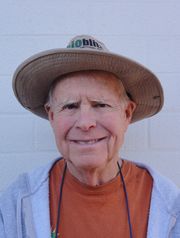 [Source: Jeremy Duba, Arizona Capitol Times, February 29, 2016] – An audit aimed at eliminating some of the 200-plus boards and commissions in state government is still underway, but Gov. Doug Ducey isn’t waiting for the full results to get started on his plan.
[Source: Jeremy Duba, Arizona Capitol Times, February 29, 2016] – An audit aimed at eliminating some of the 200-plus boards and commissions in state government is still underway, but Gov. Doug Ducey isn’t waiting for the full results to get started on his plan.
Ducey’s primary vehicle for paring down the number of boards and commissions in Arizona is HB2600. A strike-everything amendment to that bill would abolish the Arizona State Parks Board, Water Quality Assurance Revolving Fund Advisory Board, Citizens Transportation Oversight Committee, State Wildland-Urban Fire Safety Committee and Advisory Board of the Arizona State Library, Archives and Public Records.
That proposal began with the Arizona State Parks Board, said Gretchen Martinez, Ducey’s legislative affairs director. A 2012 law overhauling the state’s personnel system, which was championed by then-Gov. Jan Brewer, shifted authority for hiring the state parks director from the board to the governor. Since the governor now exercises decision-making authority similar to that of the parks board, Martinez said it make no sense to continue the status quo.
“It created a huge inefficiency in the operation of that agency,” Martinez said. “The parks director … she doesn’t need to be reporting to two different groups of people.”
Another part of Ducey’s legislative agenda, HB2501, addresses issues surrounding a handful of regulatory boards, but in a far different way than that board and commission elimination bill. Rather than consolidate or eliminate boards and commissions, the bill seeks savings and efficiencies by putting them all under one roof and under the administrative authority of the Department of Health Services.
Under HB2501, 17 regulatory boards for health care professions would come under DHS’s purview, starting in fiscal year 2017 with the boards that oversee acupuncturists, dispensing opticians, homeopathic medicine practitioners, occupational therapists and respiratory care professionals. By fiscal year 2020, the Arizona Medical Board, the Arizona State Board of Nursing and the Arizona Regulatory Board of Physician Assistants will have made the move as well.
The bill does not strip any of the regulatory boards of their licensing and regulatory authority, but does shift some power to the DHS director. The director’s approval will be required for any of the boards to enter into new contracts or renew existing ones, and the director will have the power to hire and fire the heads of the regulatory boards.
“There will be no difference in how a licensee is licensed or reprimanded. Those are not reviewable by the director,” Ducey adviser Christina Corieri told the House Health Committee during a hearing for HB2501.
Furthermore, the director must review all rules approved by the boards to ensure they won’t have a “material anticompetitive effect.” If a rule will have such an effect and isn’t necessary to protect public health, the director would be empowered to reject it. That proposed law is intended to bring Arizona into conformance with the U.S. Supreme Court’s 2015 ruling inNorth Carolina Board of Dental Examiners v Federal Trade Commission, in which the high court struck down a rule requiring teeth whitening businesses to be run by licensed dentists, ruling that the regulation was intended to stifle competition.
Martinez said she expects HB2501 to save money on rent, IT services, human resource services and other aspects that the myriad health-related boards can now share. Ducey spokesman Daniel Scarpinato noted that the move could save money on contracts for things like lobbying and public relations.
“It’s a treasure trove of government waste. And I think part of the reason you’re seeing opposition and you’ll see a lot more opposition is because these are a huge money maker for the Capitol industrial complex,” Scarpinato said.
But the savings from the “90-10 boards,” so known because they keep 90 percent of the revenue they generate and send 10 percent back to the general fund, won’t necessarily go to the state. Martinez said the Ducey administration is keen on passing the savings onto the people who pay for professional licensing that the commissions oversee.
Concern about State Parks Board
Advocates of some of the entities that are on the chopping block are not pleased. And much of the pushback revolves around the Arizona State Parks Board.
Sandy Bahr, director of the Sierra Club’s Grand Canyon Chapter, said the parks board is important because it represents a number of interests and geographic regions from across the state. Eliminating the board, she said, would block an avenue by which stakeholders provide valuable input about the parks system.
“I can understand why one state parks director or assistant director would want to get rid of them, because yeah, it’s messy. It is messy and it takes more time to listen to people, to engage with people, to have dialogue and to disagree. And it sounds like there’s been some disagreement,” Bahr said.
Others were uneasy with the concept in general, or at least in doing it with what some critics alleged was a lack of outside input, along with perhaps too broad a mandate in one piece of legislation. Rep. Lela Alston, D-Phoenix, objected to the idea of eliminating a slew of boards in one fell swoop.
“I think we need to very carefully look at the purposes being served and really give adequate notice to the people who are involved,” she said during a committee hearing.
Similarly, Democratic lawmakers had some reservations about HB2501, the health board bill. House Minority Leader Eric Meyer, D-Paradise Valley, questioned whether the bill was even necessary, and said he was wary of putting a new level of oversight over boards and commissions whose directors already answer to the governor. Even some GOP lawmakers, such as Rep. Paul Boyer, R-Phoenix, expressed hesitation over removing the independence of the regulatory boards.
Martinez predicted that as HB2600 works its way through the process, ideas would bubble up about more entities that should end up on the scrap heap. She noted that Alston, who expressed reservations in the House Government and Higher Education Committee, even had a suggestion of her own.
Before Alston voted against HB2600, she said, “I have been struggling with a particular board and commission over the past couple of years, and that would be the State Fair and Exposition Board. And I wonder if you would consider if this bill goes forward a floor amendment that would consider that board as well.”
Need for more oversight
Scarpinato said the elimination of boards and commissions deemed unnecessary will be an ongoing practice for the remainder of the Ducey administration. In October, the Governor’s Office sent several thousand questionnaires to the members of about 220 boards and commissions along with their executive directors, seeking detailed information about the entities’ makeup, functions and operations. The Governor’s Office said one goal of the questionnaires was to provide data that could be used to determine which boards and commissions were unnecessary and could be eliminated.
The questionnaire results have not been particularly encouraging, according to the Ducey administration. Scarpinato said a “big chunk” of the board and commission members who received the survey never responded to it, which he said was telling.
“Frankly, that speaks to the need to have a lot more oversight on these boards and commissions which have operated really in the dark of the night, so to speak, for now many years and are accountable really to no one. I mean, you can’t even get them to respond to a questionnaire,” Scarpinato said. “We really started that because we wanted to know more. And really we can’t even get the basic information in many cases. So there’s a real problem here.”
 pply by clicking here: Boards and Commissions Application.
pply by clicking here: Boards and Commissions Application.
 spend it as they choose, about $1.8 billion has been returned to Arizona communities through grants and programs that help people who are homeless, victims of domestic abuse and children in the foster care system.
spend it as they choose, about $1.8 billion has been returned to Arizona communities through grants and programs that help people who are homeless, victims of domestic abuse and children in the foster care system.


You must be logged in to post a comment.